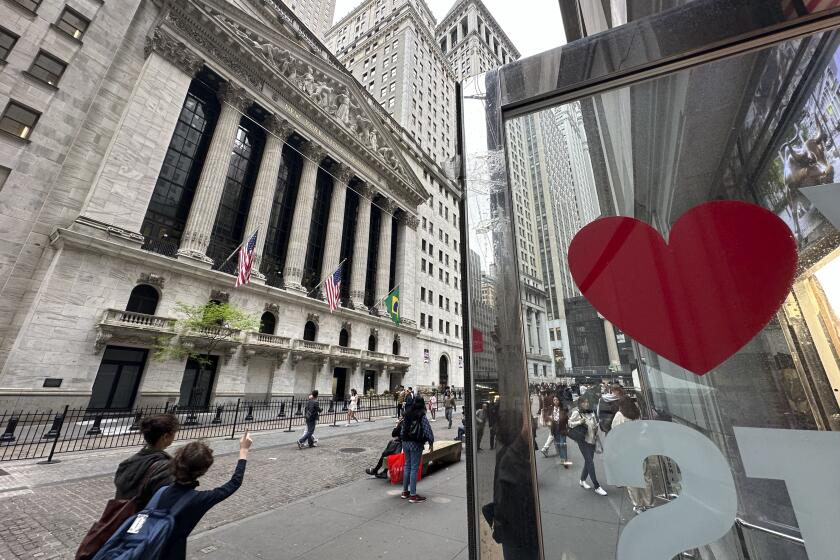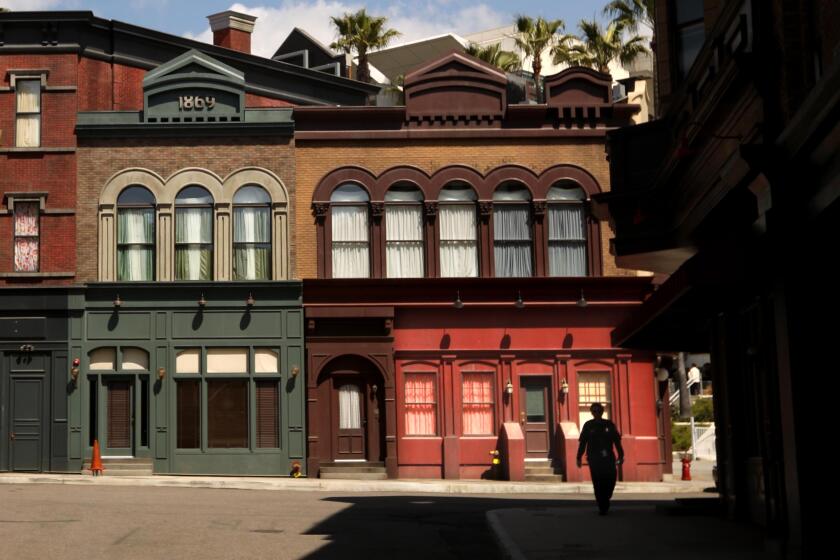Fed Survey Shows Slow Growth Continuing : Economy: Report for March and April fuels speculation that interest rates will stand.
The economy continued to grow during March and April, but at a pace that showed little sign of firing inflationary wage or price increases, a Federal Reserve Board survey said Wednesday.
The central bank’s latest survey of the economy--the so-called beige book--confirms that the economy has lost steam since late last year, although it is still expanding.
Four of the 12 Federal Reserve districts in the survey said business conditions were “improving solidly,” and six said growth was continuing but more weakly.
The Cleveland, Chicago, Kansas City and Minneapolis areas, where there were reports of solid gains, were exceptions.
The Federal Reserve Bank for the San Francisco district reported that the economy there grew at a slower pace, with weather disruptions causing some slowing in California’s moderate recovery. Heavy rains in March were blamed for some of the weakness in the state’s retail sales growth, particularly for durable goods. The weather also caused damage to fruit and vegetable crops.
For the nation as a whole, “the basic message is consistent with an economy that clearly has lost momentum,” said Robert Dederick, economic consultant to Northern Trust Co. in Chicago. “It’s not across the board and it’s not in every sector, but clearly the economy’s momentum is slower, so that price pressures show no signs of intensifying.”
The Fed surveys business people about every six weeks to measure the economy’s pulse. The central bank will use the findings when its policy-setting Federal Open Market Committee meets May 23 to consider interest rate policy.
Most analysts regard Fed policy as being “on hold” for now after seven rounds of short-term rate increases from early 1994 through last Feb. 1 that were aimed at bringing the economy into a “soft landing.”
Many recent indicators suggest that higher borrowing costs have wrung much of the vigor out of the expansion as gross domestic product growth dropped to 2.8% in the first quarter from a sizzling 5.1% at the end of last year.
The Fed said there were widespread reports of rising commodity and industrial prices, although not for construction materials. But it said the increases were either moderate or not accelerating and were in many cases not being passed through to the finished goods level, where consumers would be affected.
In addition, pressure from rising wages was moderate, although there were labor shortages in many sectors and regions.
Manufacturing was still on the rise in most regions of the country, though by varying degrees.






